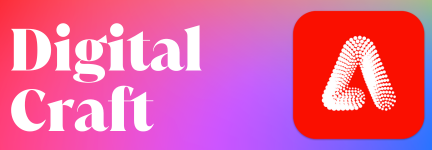
Unlocking Creative Ideas with Sora AI

Nik Kleverov is the co-founder of Native Foreign, an Emmy-nominated creative agency in LA that specialises in motion design, generative AI technology, and branded content. As a creative who operates in the world of motion, AI tools have piqued Nik’s interest, resulting in experimentation with the likes of Dall-E, Runway Gen-2 and more. He recently used these to create his short film ‘The Kiss 1.0’, a never-ending project based on Anton Chekhov’s short story.
Following this, Nik became one of the first seven artists announced to be working with OpenAI’s new text-to-video model, Sora. The model can generate visually imaginative and realistic videos, up to a minute in length, based on the user’s prompt.
“As a creative, AI tools have really helped me streamline the creative process,” says Nik, speaking to LBB’s Ben Conway about his Sora experience so far. “As much as I enjoy text-to-image models, the text-to-video hits on a whole different level. I’m a creative that thinks in motion, so being able to map out a story in video is infinitely more useful for me than just making images.”

Above: Nik Kleverov
Nik initially became familiar with OpenAI through ‘Critterz’, the first ever animated film created wholly with DALL-E-generated imagery. Then, his agency Native Foreign created a few pieces of brand storytelling for OpenAI, including the introductory ChatGPT retrospective film that played at the beginning of the company’s first ever DevDay keynote talk. Earlier this year, he received the invite to try out Sora, “and I still pinch myself,” he says.
“Sora has been able to help me bring life to ideas that have been locked away in a vault, unable to be touched due to resource limitations. I’m currently playing around with a lot of near and dear ideas, as well as doing general tests on how I could see it influencing future brand work.”
Nik acknowledges - and accepts - that no AI tool is perfect and each comes with its own learning curve, but says that generative video AI will first have its biggest impact in shorter-form content, rather than the traditional way we think about ads. “It’s a lot easier to wrap your head around how something like this would work in a bite-size format, rather than longer features – at least for now.”
A believer in AI’s power to speed up the exploration of original concepts, he says, “At the very least, it’s going to impact mapping out a story and being able to lay the foundation for a vision to be expounded upon further. But I could see it becoming parts of finished work, for sure.”
To announce his involvement with the model’s development and testing, the creative recently shared a showreel video he made with Sora on his social accounts, and via OpenAI’s official blog. In turn, this has opened “some very interesting doors” for him and invited feedback that he’s very grateful for - albeit a bit overwhelmed by at times.
Above: Nik's Sora Showreel
Some critics, for example, have pointed out some of Sora’s flaws, noting how it struggled with the spelling of some signage featured in his film. However, addressing these comments and people in the industry who have taken issue with creators using AI, he says, “Yes, many have pointed out the misspellings. To me, that’s an easy thing to fix in the composite, and we’re getting a lot closer with something a lot quicker.”
He adds, “I also think people that think AI is going to take jobs away just need to spend some time with the tools to see that they’re not ‘magic button’ solutions – there’s a lot of skill and craft to creating the desired outputs, like with any of the AI tools out there.”
Going forward, Nik hopes to continue experimenting with Sora’s developing capabilities, and share more of his generations soon. “I’m excited about what the future holds.”















